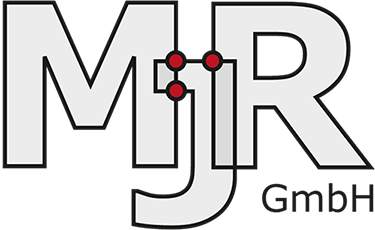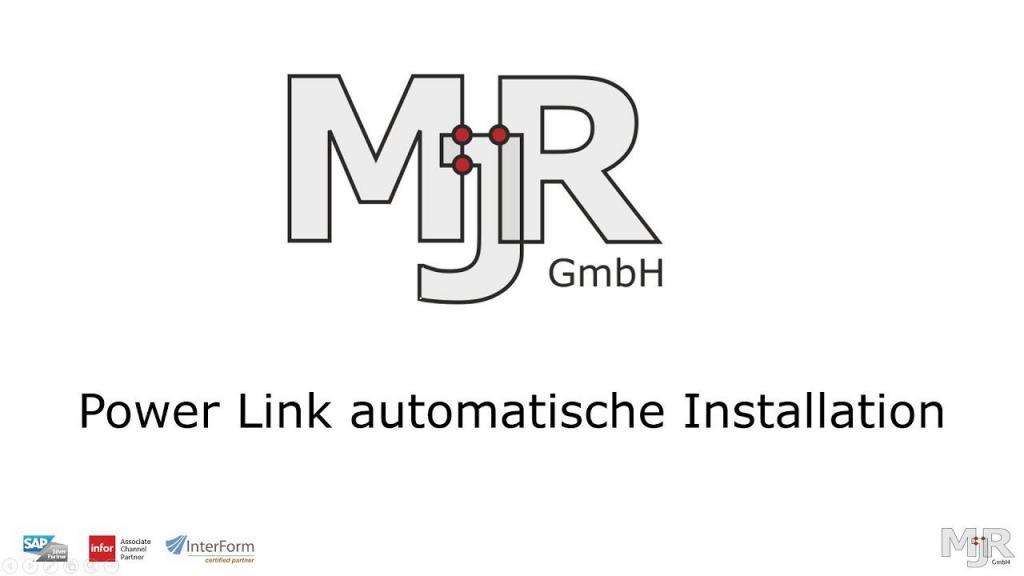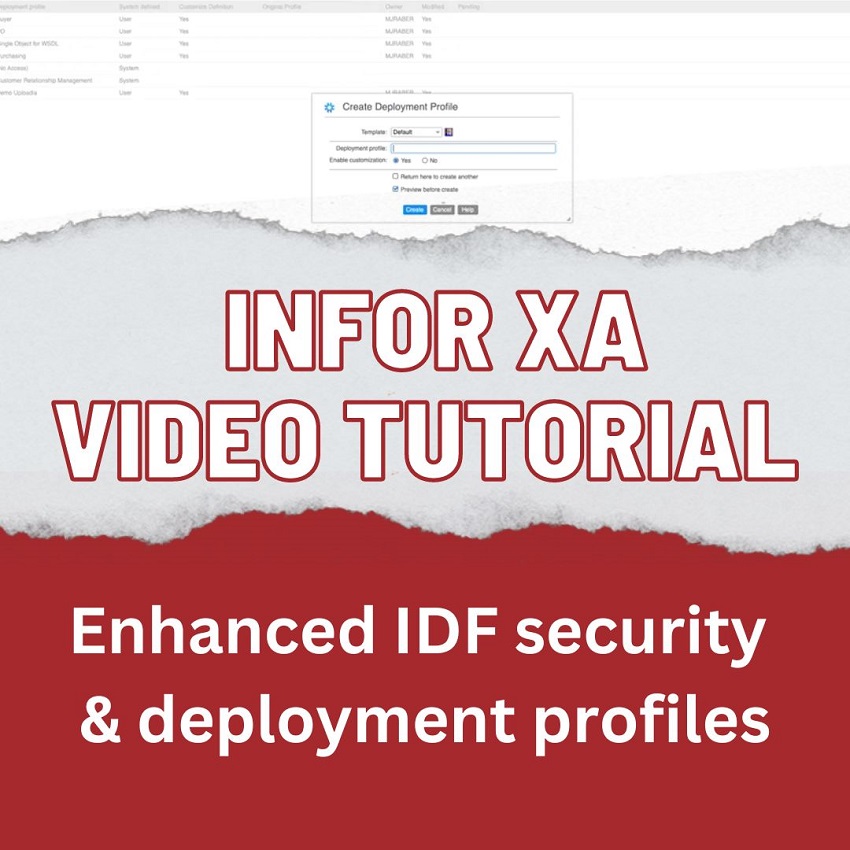Inhalt

Michael Raber
CEO
Your specialist for IT consulting and support.
Contact on LinkedIn
In this blog, we explain the challenges in companies and benefits of integration as well as various interface topics.
Would you like an overview of how integration can help digitize your business? Then you’ve come to the right place.
Challenge for businesses
The infrastructure in companies is becoming increasingly digital. More and more systems – hardware or software – are digitized, in the sense that they provide information or can be integrated into a communication with other systems. This will be pushed further and further in the near future and represents an important success factor for companies. Only with new technologies can you set up your own company in such a way that processes become more flexible, simpler and more transparent.
This is the so-called digitization that everyone is talking about today.
In the past, systems were connected individually, i.e. point-to-point. So-called interfaces were created, which were usually adapted to the circumstances of the systems to be connected. So kamen dann unterschiedlichste Technologien zum Einsatz, deren Management-Aufwand exponentiell steigt. In today’s world, this approach is not only doomed to failure, but can bring companies down if mission-critical systems and interfaces are no longer kept track of. Often, this is compounded by the fact that these concepts have been created and kept alive over many years by individuals with specialized knowledge. Then a single person becomes a mission-critical component. A very high risk. This illustration shows an example of how a company infrastructure develops over the years if a sustainable integration concept is missing. The colors of the arrows represent different technologies.
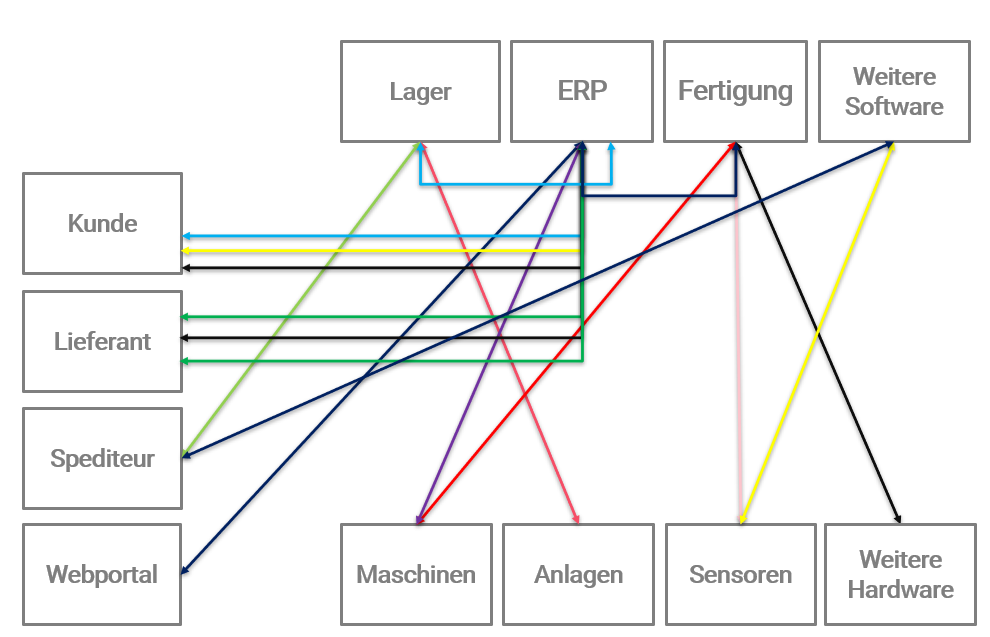
What means integration?
Configuration
With an integration concept and standardization, this risk can be reduced to zero. It is a matter of getting the various systems in the company to speak a common language. At first glance, this sounds abstract and not very tangible, but in practice it is not very complicated and can be implemented with manageable effort even for small and medium-sized companies by means of a step-by-step approach. The goal must be to use standards and minimize complexity. The following sections outline how such a concept can be implemented and how integration serves as the key to successful digitalization.
Digitalization is integration – Integration is digitalization
The concept
The path to structured and standardized digitization leads via the integration of the different systems in the company. For this purpose, the evolved structure of interfaces is replaced by a common platform for the transmission of messages. This platform, known as middleware or Enterprise Service Bus (ESB), has all the components required for flexible, simple, and transparent communication between systems.
- Connectors for a wide variety of systems and standards allow integration of almost all common standards like
- REST and SOAP
- FTP/FTPS/SFTP
- WebDAV
- Filesharing with different protocolls
- Datenbank (via JDBC, ODBC, etc.)
- Hardware (OPC UA, MQTT or with IoT-platforms)
- Furthermore, these can be extended by individual connectors to cover special requirements. Although modern systems usually provide standardized protocols, such as those listed above, it should also be possible to add additional functionality through configuration or development for „exotic“ or older systems.
- Transformations to convert data formats as needed, for example:
- XML
- JSON
- CSV
- Text
- Binary data
- Messaging
In order to distribute messages between systems, rules must be created and managed to ensure that information is transmitted to the correct target systems. For this purpose, conditions are queried from the message contents, which are then decisive for the distribution of the data
- Mappings are used to map data from source system to target system. The mappings are part of the messaging and ensure that information (for example, field contents) from the source system and the target system find the right path.
- Trigger vs. Polling: Another important aspect is the question of how processing is triggered. For this purpose, a trigger can be activated in the source system – if available – which, for example, actively sends the data to the middleware as a result of a specific business process. Where this is not possible, data can be queried cyclically for a certain status in so-called polling and then processing can be initiated from this.
- Monitoring and Error handling: Once the integration of the various systems has been realized, problems – usually caused by data errors – must of course be expected at any time and this situation must then be rectified. For this purpose, common middleware has monitoring features and the ability to detect errors and actively send notifications to administrators or responsible persons, who then take appropriate action.
The following illustration provides an overview of the concept:
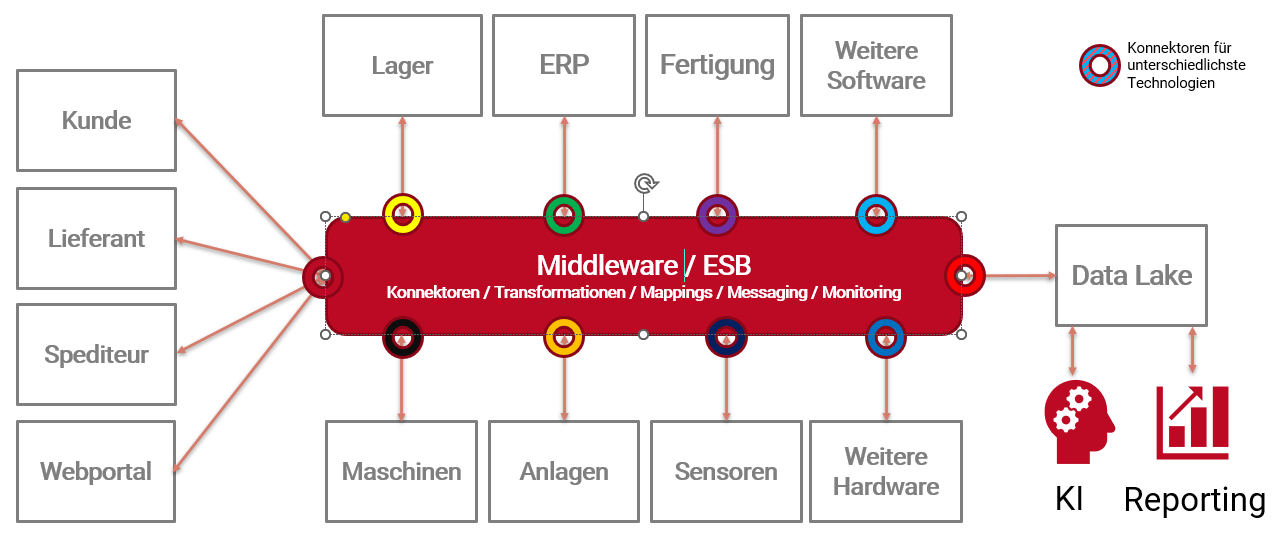
Basic Concepts
In this article, only the professional variant of a middleware / ESB (Hexagon Xalt Integration, Infor OS/ION or Mule ESB are mentioned here as examples) will be discussed. In addition, there are also so-called integration tools such as Boomi or Talend, which start at a deeper, more technical level and have a higher level of complexity. Another level down, you will find so-called frameworks such as Spring Integrations or Apache Camel, which are useful for developers, but are not suitable for integration concepts, as the complexity would clearly go beyond the scope. These frameworks are often used in professional middleware solutions as basic technology.
Is it expensive?
With a pragmatic approach, the integration of the systems in the company can also be tackled with little effort and risk. Instead of redesigning everything with a „big bang“ and activating it on day X, a step-by-step approach is a good idea here. In this way, costs and risks can be controlled in such a way that implementation in SMEs is also possible and purposeful.
Ready for future?
Once these concepts have been introduced, the foundation has been laid for further improvements, which today are still considered dreams of the future, but in a few years will certainly be part of the standard equipment of a modern and efficient company.
The first component to be mentioned here is the so-called DataLake, which does exactly what its name suggests: all company data flows into it and is initially simply collected.
In contrast to the previous approach to reporting (BI), unstructured data that does not fit into a rigid database structure can also be collected here. In the past, questions were defined, which were then answered using collected data. In the future, all data will be collected first, and then when a specific question arises, the necessary data will be pulled from the DataLake and analyzed. This concept has only become possible in recent years through the development of powerful hardware and software.
In the next step, this very large amount of collected data can now be utilized for evaluation by means of artificial intelligence (AI), which then recognizes systematics from the running data, draws conclusions and can be used in the company to make decisions or predictions.
On our page under integration, we present even more application examples and integration topics.


